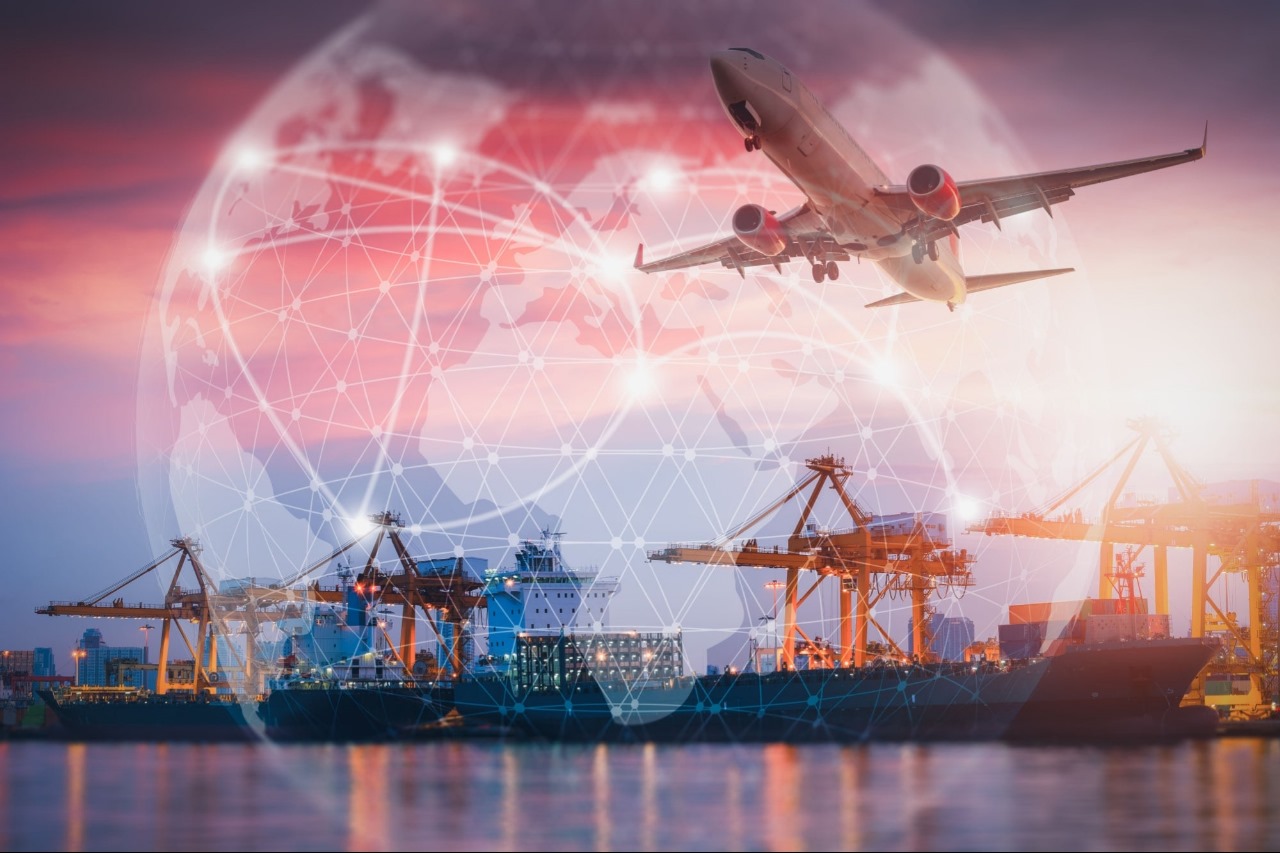Read Time: 6 mins

How Technology is Changing Global Trade
Technology has reshaped almost every aspect of modern life—from how we communicate to how we work and shop. But one area where its impact is particularly profound is global trade. From enabling faster transactions to revolutionizing supply chains, technology is changing how goods and services flow across borders.
For importers, e-commerce entrepreneurs, international traders, and small business owners, understanding how these advancements impact global trade is essential. You’ll not only stay ahead of the competition but also leverage these innovations to grow your business.
This blog explores the key technologies transforming global commerce and their implications for traders and businesses worldwide.
Digital Platforms and E-commerce
Technology has powered the meteoric rise of e-commerce, and with it, global trade has entered a new era. Digital marketplaces, such as Alibaba, Amazon, and eBay, have eradicated the barriers of distance, allowing buyers and sellers to connect from opposite sides of the world with just a few clicks.
The Influence of E-commerce on Global Trade
Digital platforms have revolutionized traditional trade models:
• Borderless Trade: Exporters can now bypass intermediaries and sell directly to customers via online platforms.
• Demand-driven Logistics: Businesses can stock products closer to their customers based on purchase trends and regional demand insights, improving delivery efficiency.
Real-world Impact
Retailers in Southeast Asia, for instance, can sell handmade goods to customers in the United States seamlessly, while global drop shipping models have empowered small businesses to scale without hefty inventory investments.
By increasing accessibility, digital platforms have created an ecosystem where even the smallest business can thrive globally.
Blockchain Technology in Trade
Blockchain, often associated with cryptocurrencies, has far-reaching implications for global trade. Put simply, blockchain removes the need for intermediaries by creating secure, tamper-proof records of transactions.
Transparency and Trust in Trade
Blockchain is particularly beneficial for enhancing trust in international trade. By providing an immutable ledger:
• Supply Chain Visibility: Entire supply chains—from the origin of raw materials to final delivery—can be tracked and documented.
• Fraud Prevention: Operations that once relied on paper documents, such as bills of lading, are now secure and efficient with digital blockchain solutions.
• Smart Contracts: These automate payments when conditions (e.g., successful delivery) are met, minimizing disputes and delays.
Example of Blockchain Use
IBM’s TradeLens platform uses blockchain in shipping to improve the transparency of freight logistics. By digitizing shipping data, businesses save millions annually in administrative costs.
Artificial Intelligence (AI) and Data Analytics
Artificial intelligence is revolutionizing decision-making in trade. Combined with data analytics, AI tools optimize everything from route planning to demand forecasting.
Enhancing Decision-making with AI
AI applications in trade include:
• Predictive Analytics: Examine historical trade data to predict market trends and help businesses guide inventory and pricing strategies.
• Chatbots for Customer Service: AI-driven chatbots provide instant responses to trade queries, improving customer satisfaction.
• Risk Analysis: Assess geopolitical risks and suggest alternate trade routes, ensuring smoother operations.
Real-world Example
Amazon uses AI-powered algorithms to adjust product prices in real-time based on factors like competitor activities, demand fluctuations, and inventory levels.
Automation and Robotics in Logistics
Warehouse floors now look more like sci-fi sets, thanks to robotics and automation. These technologies are dramatically improving supply chain efficiency.
Automating Warehousing and Distribution
• Warehouse Robotics: Robots, like those from Kiva Systems, lift and move goods in fulfillment centers more efficiently than humans.
• Order Fulfillment: Automated systems manage inventory, pick products, and package them for delivery.
Reducing Costs
Automation reduces labor costs and increases productivity, allowing businesses to meet growing trade demands while cutting overhead expenses.
Reshaping Labor Dynamics
While automation is enhancing efficiency, it’s also shifting labor demands. Employees are now focusing on higher-order tasks like managing logistics software, leaving repetitive tasks to machines.
Internet of Things (IoT)
The Internet of Things (IoT) enables a network of connected devices that share real-time data, further optimizing global trade.
Applications in Trade
IoT benefits supply chains in several ways:
• Improved Tracking: Sensors within shipping containers monitor and share data on location, temperature, and condition of goods.
• Real-time Visibility: Businesses gain real-time insights into supply chain operations, reducing delays and inefficiencies.
• Risk Mitigation: IoT devices immediately alert suppliers to issues such as temperature fluctuation, preventing product spoilage.
For example, agricultural exporters use IoT sensors to monitor produce during transport, ensuring items like fruits or pharmaceuticals reach their destination fresh and intact.
Advances in Shipping and Transportation Technologies
Shipping technology advancements bring precision, speed, and sustainability to trade logistics.
Innovations in Shipping
• Autonomous Vehicles: Drones and autonomous ships are improving precision in trade delivery.
• Sustainable Shipping: Eco-friendly ships powered by renewable energy are reducing carbon footprints in international trade.
Example of Impact
Companies like Maersk are using advanced shipping solutions to track carbon emissions and alter trade routes, which minimizes environmental impacts and operational costs.
Cybersecurity in Global Trade
Technology in trade demands strong cybersecurity measures to protect sensitive data and prevent disruptions caused by cyberattacks.
Common Cyber Risks
• Data Breaches: Leaks of sensitive trade agreements or pricing details.
• Phishing Scams: Fraudulent interference in financial transactions.
• Ransomware Attacks: Hackers demanding ransoms to restore compromised systems.
How to Enhance Cybersecurity
Through secure data encryption, employee awareness training, and proactive investments in robust IT infrastructure, businesses can mitigate risks and build resilience.
Importance for Businesses
Cybersecurity failures can lead to legal liabilities and damaged reputation. For small businesses in global trade, implementing cybersecurity measures isn’t just necessary—it’s critical.
Leverage Technology for Trade Success
Technology’s impact on global trade is undeniable. From revolutionizing e-commerce platforms to streamlining logistics and innovating cybersecurity, these tools are essential for modern businesses. By adopting impactful technologies like blockchain, IoT, and AI, traders and business owners can sharpen their competitive edge and meet the demands of an evolving global market.
